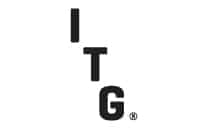By Duncan Higgins and Harald Carlens, ITG
Extensive preparation efforts across the industry paid off when MiFID II came into force on January 3, as major mishaps were few and things mostly went as planned. As a testament to the level of preparedness of both the buy-side and sell-side, ITG saw little deviation from the norm in client activity—with clients using similar types of algorithms for execution and continuing to find valuable liquidity through electronic and other means.
Aside from the expected changes to the liquidity landscape— broker crossing networks (BCN) replaced by systematic internaliser (SI) structures, a halt to bid/offer trading under the reference price waiver, and periodic auctions volumes seeing a significant uptick—it was mostly business as usual, which was a promising sign for the year ahead.
Off the Starting Blocks
During the first week of 2018, block venues captured record market share, with large in scale (LIS) size executions making up 29%1 of all dark trading—up from the previous weekly high of 23%2 set in November 2017. Clients using ITG’s Dark algorithm reformatted for MiFID II traded a record 46%3 of value through conditional orders, including POSIT Alert. Notably, ITG’s clients participated in almost half (47%)4 of the trading activity across the dark pools that support conditional orders. Following a doubling of block trading volumes in 2017, more than 80% of clients we surveyed told us they expect block trading volumes to continue to grow under MiFID II5.
Ticked Off
One change that challenged the market in the opening trading days of MiFID II was the new tick size regime. The expected harmonisation of tick sizes in Europe failed to materialise initially, with Borsa Italiana and SIX Swiss Exchange deviating from the standard approach taken by other markets. Tick sizes on the Swiss exchange were narrower than those in the same stocks on European multilateral trading facilities (MTFs), with the opposite being the case on the Borsa Italiana. This seems to have contributed to the highest market share for the Swiss exchange seen in recent years, with almost 80%6 of Swiss lit market equity trading taking place on the primary exchange. Borsa Italiana’s market share seems to have remained steady in the first few trading days of MiFID II at just under 80%7.
Never Mind the Cap
On the evening of January 9, ESMA delayed the publication of the MiFID double volume cap (DVC) data, to be used by national regulators for determining which venues need to halt use of the reference price waiver. Accurately bringing large amounts of data together from multiple sources is always a challenge, though this requirement has been a long time coming, so it was somewhat surprising to see this delay. While the industry has readied itself for the caps coming into effect, the delay does give some breathing room to anyone who was not yet fully prepared for the new landscape, including connectivity to periodic auction venues like Cboe Periodic Auctions and POSIT Auction. Despite the delay, we still expect continued growth in Large-in-Scale (LIS) and periodic auction trading in anticipation of the caps coming into effect on the revised timescales in March.
1, 2 Fidessa: January 5, 2018, November 17, 2017
3 ITG, January 5, 2018
4 ITG analysis with ITG, Cboe Global Markets and Turquoise data, January 5, 2018
5 ITG MiFID II client survey, December, 2017. Link to survey here
6, 7 Cboe Global Markets, January 5, 2018
